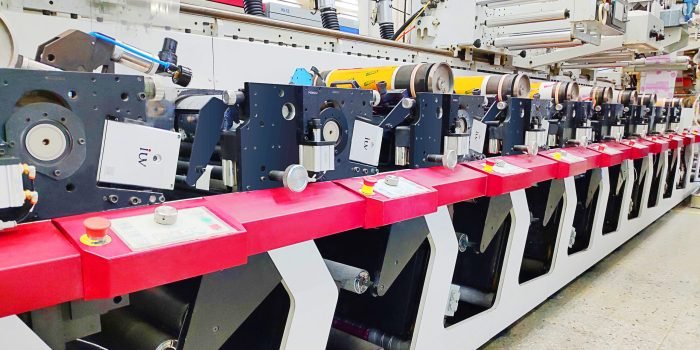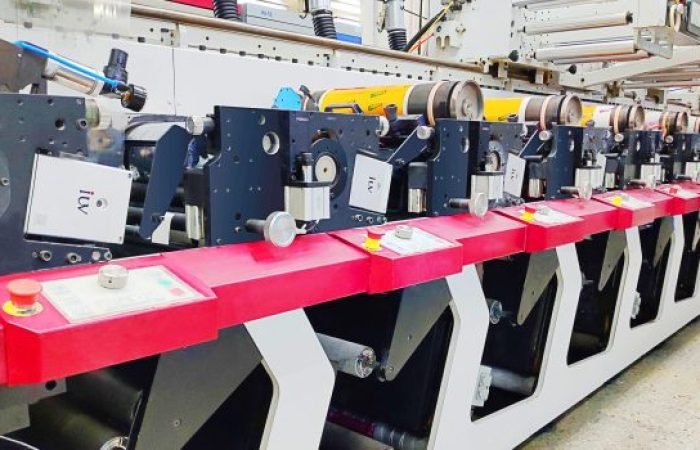Discover effective methods to enhance ink adhesion in label printing. From material selection to post-printing treatments, learn how to achieve durable and high-quality prints.
How to Improve Ink Adhesion in Label Printing?
- In label printing, ensuring strong ink adhesion is crucial for producing high-quality, durable labels.
- Poor adhesion can lead to issues such as smudging, flaking, or peeling, which can significantly impact the final product’s appearance and functionality.
- Here’s a detailed guide on how to improve ink adhesion in label printing.

Key Consideration of Ink Adhesion in Label Printing
1. Material Selection
- Substrate Quality: Choose substrates that are specifically designed for printing. Some materials, like certain types of plastic films, may require special coatings or treatments to enhance ink adhesion.
- Coated Materials: Use substrates with pre-applied coatings that are known to improve ink adhesion. These coatings can be applied by the manufacturer and are tailored to work well with specific inks.
2. Surface Treatment
- Corona Treatment: Apply corona treatment to the substrate before printing. This process increases the surface energy of the material, making it more receptive to ink. Corona treatment is particularly effective for non-porous surfaces like plastics and films.
- Flame Treatment: For some substrates, flame treatment can be used to improve surface wettability and adhesion. This method involves exposing the substrate to a controlled flame, which alters the surface chemistry.
- Chemical Primers: Use chemical primers or adhesion promoters to prepare the surface. These substances create a better bond between the substrate and the ink.
3. Ink Formulation
- Matching Inks to Substrates: Select inks that are specifically formulated for the type of substrate you are using. Different inks are designed to work best with specific materials, so choosing the right ink is critical.
- UV-Curable Inks: Consider using UV-curable inks, which offer excellent adhesion and durability. UV inks cure quickly under UV light, forming a strong bond with the substrate.
- Specialty Inks: For challenging substrates, specialty inks with enhanced adhesion properties may be necessary. Consult with your ink supplier to find the best solution for your needs.
4. Printing Conditions
- Optimal Drying/Curing: Ensure that the ink is fully dried or cured after printing. For water-based and solvent-based inks, proper drying times and temperatures are essential. For UV inks, ensure that the UV lamps are properly calibrated and functioning.
- Consistent Pressure and Speed: Maintain consistent printing pressure and speed to ensure even ink distribution and adhesion. Variations in these parameters can affect the quality of the print.
5. Post-Printing Treatments
- Overprint Varnishes: Apply an overprint varnish to protect the printed surface and enhance adhesion. Overprint varnishes can also add a glossy or matte finish to the label.
- Lamination: Consider laminating the printed labels to provide an additional layer of protection. Lamination can help prevent ink from rubbing off and increase the overall durability of the label.
6. Quality Control
- Surface Energy Testing: Regularly test the surface energy of the substrate using a dyne pen or contact angle measurement. This helps ensure that the surface is properly treated and ready for printing.
- Adhesion Testing: Perform adhesion tests, such as the cross-hatch test (ASTM D3359), to verify the strength of the ink adhesion. This test involves cutting a grid pattern into the ink layer and applying tape to see if the ink lifts off.
- Visual Inspection: Conduct visual inspections to check for any signs of poor adhesion, such as peeling, flaking, or smudging. Address any issues promptly to maintain high print quality.
7. Operator Training
- Skill Development: Provide regular training to operators on the importance of ink adhesion and the steps they can take to ensure it. This includes proper handling of substrates, correct ink application, and maintenance of printing equipment.
- Quality Awareness: Foster a culture of quality among employees. Encourage them to report any issues and participate in continuous improvement initiatives.
Improving ink adhesion in label printing requires a combination












